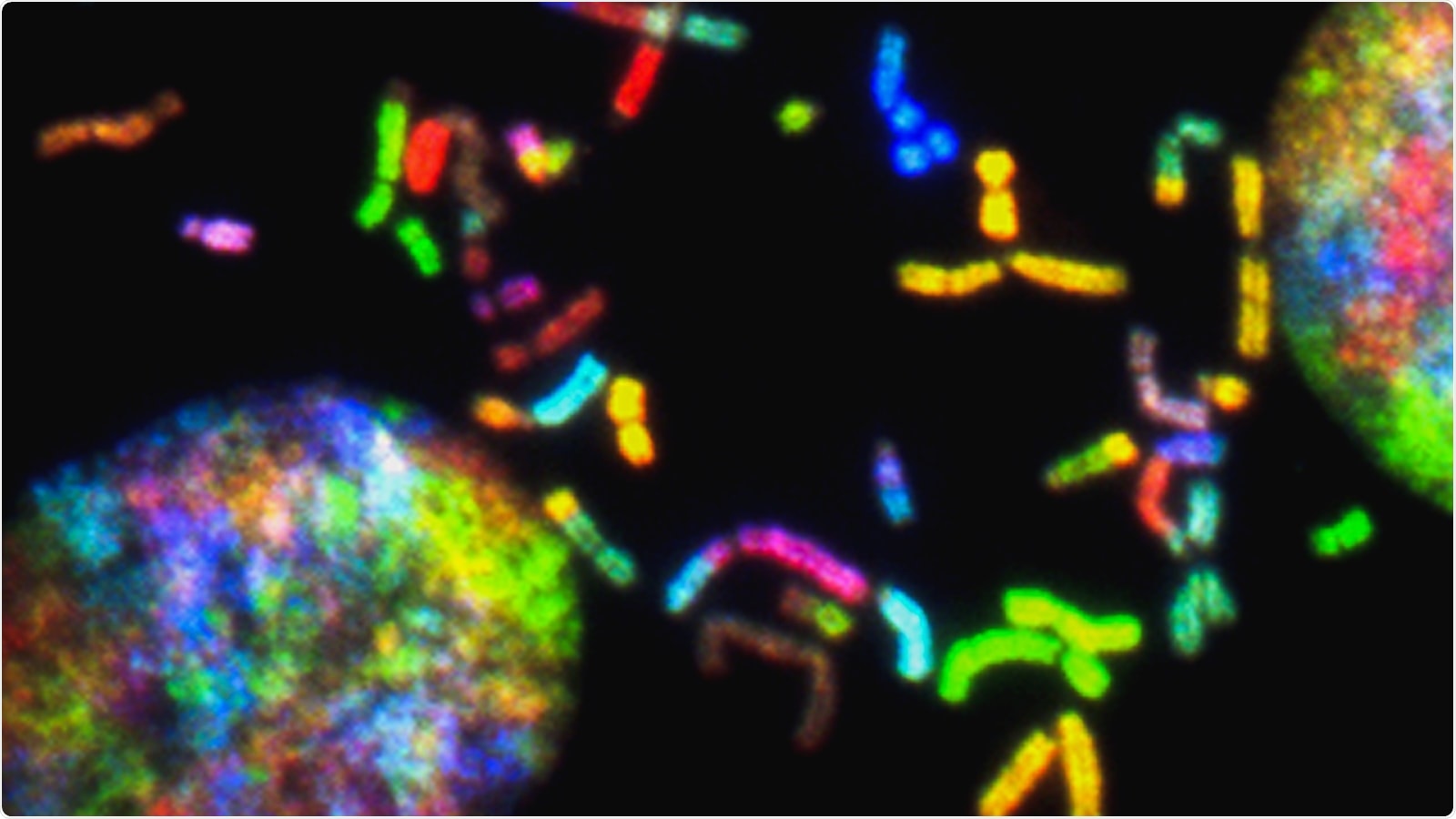Interpreting the particular mutations that play a role in different forms of cancer is crucial to enhance diagnosis and treatment.

Princeton computer scientists developed new methods that allow researchers to more accurately identify losses or duplications in chromosomes in cancerous tissue. Brain cancer chromosome image by Thomas Ried, NCI Center for Cancer Research, National Cancer Institute, National Institutes of Health. Image Credit: Neil Adelantar.
However restrictions in DNA sequencing technology make it hard to identify certain significant mutations that are usually associated with cancer, like the duplication or loss of parts of chromosomes.
Computer researchers from Princeton University have now developed methods that will enable scientists to more precisely spot these mutations in cancerous tissue, creating a clearer picture of the evolution and spread of cancer than was previously possible.
Duplications or losses in chromosomes happen in a majority of the solid tumors, like breast, ovarian, pancreatic, and prostate tumors. As cells develop and divide, errors in the processes of copying and isolating DNA can also result in the duplication or deletion of individual genes on chromosomes, or lead to the duplication of entire genome of the cell—that is, all 23 pairs of human chromosomes. Such modifications can inactivate genes that inhibit the growth of cancer or stimulate cancer-promoting genes.
They’re important driver events in cancer in their own right, and they interact with other types of mutations in cancer.”
Ben Raphael, Study Co-Author and Professor, Department of Computer Science, Princeton University
Raphael also worked with Simone Zaccaria, a former postdoctoral research associate at Princeton University.
While medical science has identified the mutations as vital parts of cancer growth, detecting these duplications or losses in chromosomes is complicated with existing technology. This is because DNA sequencing technologies are incapable of reading the whole chromosomes from end to end.
Rather, the technologies enable scientists to sequence snippets of the chromosome, from which they arrange an image of the whole strand. The weakness of this approach is that it cannot effortlessly detect gaps in the DNA strand or regions of duplication.
To deal with this issue, Raphael and Zaccaria developed novel mathematical tools that enable investigators to look for the huge collection of DNA snippets and expose whether there are either duplicates or missing pieces. Called HATCHet and CHISEL, the algorithms are comprehensively explained in separate publications in the Nature Communications and Nature Biotechnology journals on September 2nd, 2020.
All the cells you are sequencing come from the same evolutionary process, so you can put the sequences together in a way that leverages this shared information.”
Simone Zaccaria, Former Postdoctoral Research Associate, Princeton University
Zaccaria will shortly begin her positions as a principal research fellow at the University College London Cancer Institute and a visiting research scientist at Francis Crick Institute in London.
The reality is that the technology for sequencing DNA in individual cells has limitations, and algorithms help researchers overcome these limitations. Ideally, both the sequencing technologies and the algorithms will continue to improve in tandem.”
Ben Raphael, Study Co-Author and Professor, Department of Computer Science, Princeton University
Raphael’s research team has multiple collaborations with cancer scientists who have started to use the CHISEL and HATCHet algorithms to sequences from numerous types of experimental models and patient samples.
Source:
Journal reference:
Zaccaria, S & Raphael, B, J. (2020) Characterizing allele- and haplotype-specific copy numbers in single cells with CHISEL. Nature Biotechnology. doi.org/10.1038/s41587-020-0661-6.